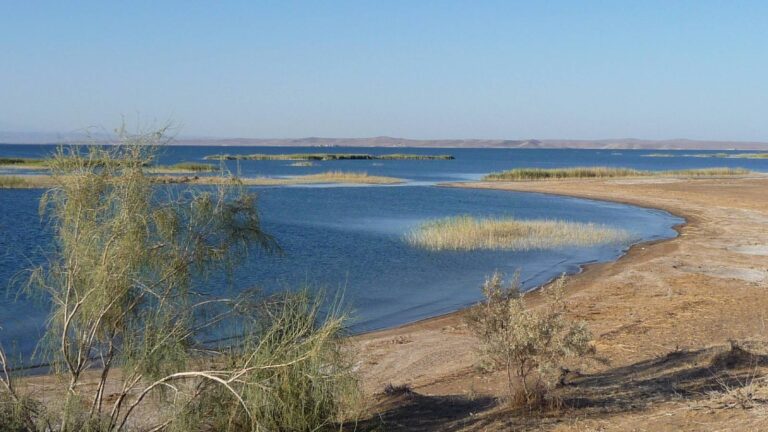Getting There
The closest train station to Nurata is in Navoi. From there you can take a taxi to Nurata, or more cheaply get a local bus to Karmana, and then change at the bus station for Nurata.
What to Expect
The Nurta Chashma is a cultural heritage monument, but importantly it also remains an active place of pilgrimage for local Muslims who come here to pray and take water from the holy spring. It is also a population for newly wed couples to take their wedding photos, so you will see multiple snapshots of Uzbekistani life.
History
The centrepiece of Nurata Chashma is a natural spring, which is what gives the site its name. Water is scarce in this desert, so local people believed the spring was a miracle and built a shrine around it, in the shadow of Nur Fortress. The 10th century historian Narshahi describes there being a graveyard here, in which were buried men who had personally seen the Prophet Muhammad.
The earliest buildings you see at Nurata Chashma today are the two 16th century mosques, which are both beautifully decorated with wood carving. There is also a later bathhouse, but its architecture is in a similar style.
Among the many legends about the city, there is a story about a meteorite that fell here, which formed a source of healing water. Later, the Juma mosque was built around it, attracting the eyes with a large number of columns and one of the largest domes in all of Central Asia, and a mazar that stores the relics of the prophet Nur-oty (“nur” – “ray of light”, “ota” – “father” ).
Nowadays the complex is called “Chashma”. The water in the spring is recognized as holy. Its temperature keeps a constant mark – 19.5 degrees Celsius. Experts who have studied the composition of water have found many useful trace elements in it – iodine, silver, bromine. They have a beneficial effect on human health, strengthening the nervous system, and providing a general healing effect on the entire body. In the spring, fish without scales – marinka – swim. They, like the water in the spring, are considered sacred, therefore it is forbidden to catch them and eat them.
Facilities Available
The facility has wi-fi, catering, accommodation, transportation services.








